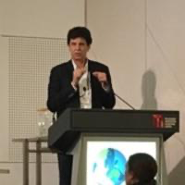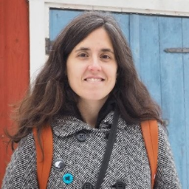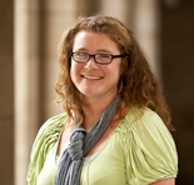Planning for sustainable development and biodiversity on Indigenous lands
School of Biosciences
School of Ecosystem and Forest Sciences
School of Agriculture and Food

Sustainable development is critical for reconciling economic growth, human wellbeing and biodiversity conservation across the globe. The complexities of planning for sustainable development are exemplified in the Tiwi Islands, 60km north of Darwin in the Northern Territory, Australia.
The Tiwi Islands
The Tiwi Islands consist of two large inhabited islands; Melville and Bathurst, originally called Ratuwati Yinjara (‘two islands’), and numerous smaller uninhabited islands. The Islands are an Indigenous estate where ‘there has been an unbroken history of occupation and ownership…’ by Tiwi people, and the population of just over 3000, is more than 90 per cent Tiwi’ (Tiwi Land Council, 2020). The Tiwi Land Council, the primary decision-making body for land and water use on the Islands, is seeking to expand economic opportunities for Tiwi communities and to improve social, economic and health outcomes for the Tiwi people.
The Islands support unique biodiversity and Tiwi cultural values in their groundwater dependent ecosystems, including endemic rainforests, riparian forests and swamps of high international and local conservation value. The extensive mangrove ecosystems alone contain important sites and hold very high local cultural values, particularly for the food they provide (Deakin University, 2019).
Economic opportunity in carbon credits
The tropical savannas of northern Australia are also among the most fire-prone ecosystems on Earth, with up to half of many savanna landscapes, including the Tiwi Islands, being burnt each year. Ecological burning is an important land management tool for Tiwi people, as well as a source of employment and income.
Savannas contain about 30 per cent of Australia’s terrestrial carbon stocks, and fire influences rates of carbon sequestration through its effects on tree growth and survival, litter decomposition and charcoal production. Fires in the late dry season tend to be hotter, more emission-intensive and can threaten biodiversity and local forest industries (Tiwi Resources, 2020).

Reducing the extent of late fires can earn land managers carbon credits, presenting an economic opportunity for the Tiwi Islands. In recognising the diversity of challenges like these, the Tiwi Land Council has identified a fundamental need to develop its capacity to make informed decisions about integrated land and water use planning.
Sustainable development through collaboration
An interdisciplinary team, led by Deakin University, with researchers in the University of Melbourne’s Faculty of Science and Faculty of Veterinary and Agricultural Sciences, in collaboration with the Tiwi Land Council, Tiwi Resources, and colleagues at Charles Darwin University, is exploring ways to support land and water management decisions on the islands. The team will use new methods of collaborative and participatory planning that involve working together with Tiwi and scientific knowledge/s and methods (University of Melbourne, 2019).
The researchers will collaborate closely with Tiwi people and organisations. Drawing on both Tiwi and western scientific knowledge/s, the team will fill knowledge gaps to represent the flora, fauna, ecosystems and cultural values in ways that enable and support Tiwi decision-making about sustainable development.
The researchers will also map the past and current distributions and status of ecosystems and significant species. They will then model how species and ecosystem distributions could change in the future under a range of land and water management, fire management and climate scenarios (Deakin University, 2019).
Aligning with the SDGs
The research aims to co-design innovative approaches for using Tiwi knowledge/s, values and preferences for land and resource together with Western scientific methods of conservation planning to make predictions and articulate scenarios for future sustainable development. The research will then be used to determine how the projected changes can be managed to contribute to Tiwi, as well as national and international goals, like the SDGs.
Specifically, the project will help to deliver SDG 8; Decent Work and Economic Growth as it directly supports Tiwi aspirations for sustainable development of their culture, livelihoods and estates. The program will also support Tiwi people and organisations to explore options for economic sustainability through diversification and innovation in land and resources use and sustainable industries.
The project contributes to SDG 11; Sustainable Cities and Communities because it focusses on participatory, integrated and sustainable socio-ecological planning and management. Due to the Tiwi peoples’ increased capacity to play a role in climate change mitigation through carbon management, the project will also contribute to achievement of SDG 13; Climate Action.
Finally, because the project is combining knowledge to develop new ways to conserve and sustainably use the unique Tiwi Islands’ terrestrial and groundwater dependent ecosystems, the project will play an important role in working towards SDG 15; Life on Land (UNSTATS, 2020).
References
- Deakin University. (2019). Planning for conservation and sustainable development on Indigenous lands. Conservation Science.
- Tiwi Land Council. (2020). The Tiwi Islands.
- Tiwi Resources. (2020). Carbon Program.
- University of Melbourne. (2019). Planning for sustainable development and biodiversity on Indigenous lands. Find an Expert.
- UNSTATS. (2020). Global indicator framework for the Sustainable Development Goals and targets of the 2030 Agenda for Sustainable Development. Geneva: United Nations.
Researchers



